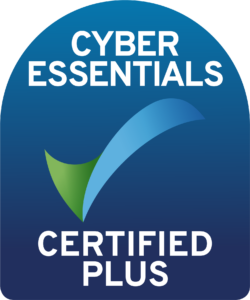Cracked by the boffins at Bletchley Park and synonymous with films like The Imitation Game and U-571, the Enigma machine was at the bleeding edge of cipher technology in the mid 20th century. Unlocking the true meaning of its coded messages had a monumental impact on the outcome of WW2.
With a slightly tangential pivot, the same premise could be applied to deciphering the sometimes-cryptic messages unveiled by product marketing teams. Tasked with communicating a product, solution or service to the market, product marketing can sometimes default to showcasing the technical features and functionality.
Now, there is a time and a place for this information – comparing competitors’ offerings can require a forensic peek under the covers. However, being able to convey the benefits to a non-technical audience or apply relevance to certain lines of business is a skill that requires a degree in translations.
Demonstrating the art of possible
As we are all well aware, buying centres and tech budget holders have become more diverse than they were 20 years ago. Lines of business including HR, finance, marketing and sales now have dedicated budgets to purchase x-tech products and services.
Assuming these buyers aren’t tech savvy, or particularly excited by the number of functions your product offers. So, how do you effectively communicate the value and the difference of your brand over a competitors?
The answer is empathy. Put the product in context. How is it going to make their lives better? How is it going to benefit the business? What possible use cases can your product be applied to? These are some of the messages that will cut through the noise of traditional speeds and feeds information.
The growing influence of Product Marketing Managers
In a recent article, McKinsey reported that PMMs could be the secret weapon in turning products from ‘meh’ to ‘must-have’. They stated the following:
- Market understanding: PMMs bring essential insights to the table which in turn help tailor products to meet customer needs and preferences.
- Orchestration: They coordinate efforts across teams to ensure a seamless transition from development to market launch.
- Risk mitigation: By understanding market dynamics they’re able to reduce the risk and guesswork associated with new product launches.
- Revenue growth: Companies with robust PMM functions see significantly higher revenue growth, with top performers having a 25-30% higher ratio of PMMs to product managers.
Used effectively, product marketing managers can bridge the gap between development and customer speak, they can pivot the stories above to resonate with their audience and act as ‘chief code breaker’, to take the technical intricacies of the product and decipher it into real business benefits.
At The Rubicon Agency we have a track-record of working with product luminaries and ‘simplifiers of propositions. Together, we craft product marketing content that bridges the gap between tech speak and storytelling. With over 25 years of experience working within the B2B tech sector we know what it takes to articulate a new product, service, platform or architecture.
